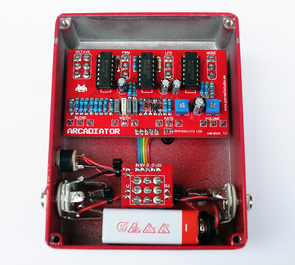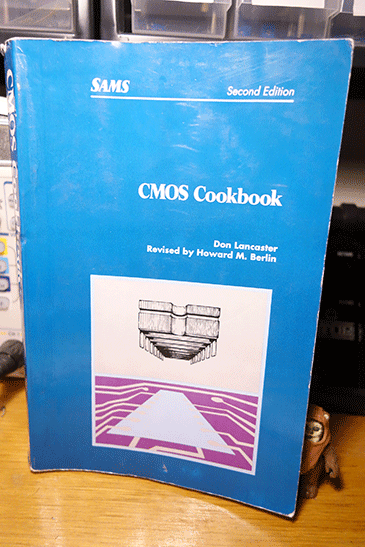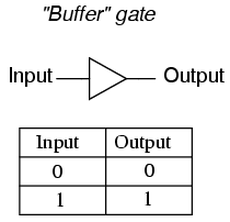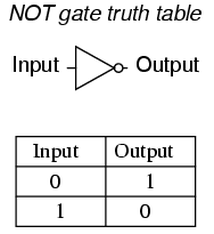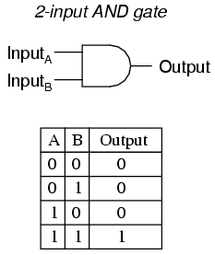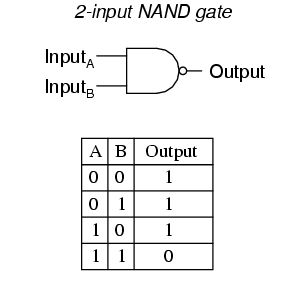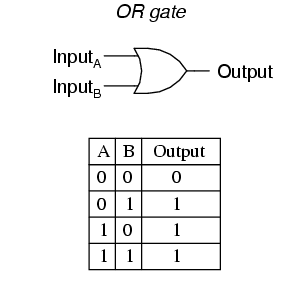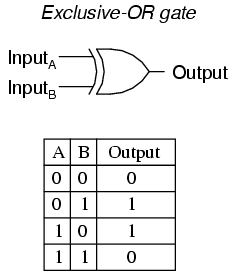2. GATES A single CMOS input/output is called a "Logic Gate". Sometimes each gate can have several inputs. A chip usually consists of several identical gates that can be used independently. In the datasheets we will find something called a "Truth Table". It tells us how the gates operates based on their logic type. Lets take a look at a few different chips and their logic.
Now the logic gets alittle trickier...
NAND and NOR gate are sometimes called the universal gates, since they both can be used to form all the other basic logic gates. Is it starting to make sense? Let have a look at a couple of more...
Those are a few basic CMOS logic chips. We'll use them later to breadboard stuff or analyze a few of my designs.
I mentioned before that not all CMOS chips follows this logic. We have many exceptions, switches, linear amplifiers, MOSFET cmos chips ect. I will cover a few of those later. Lets stop there for a while. This post turned out alot bigger than I imagined and it can be a bit overwhelming! I had a hard time wrapping my head around this when I started out. If you are confused by the logic inputs and outputs, don't worry. In the next part we'll actually make something useful, a simple squarewave fuzz. The breadboard is a great learning platform, and by making a few small circuits I hope you will begin to understand these logic alittle better. Please let me know what you think of this post and if you find anything that is incorrect. / Fredrik UPDATED with some additional info and minor clarifications 2023-10-31. Next part: CMOS workshop part 2
7 Comments
Anders
8/23/2015 05:31:52 pm
This is awesome! I've been curious about how these cmos circuits works. Thanks!
Reply
8/23/2015 11:58:27 pm
Happy to hear that it's appreciated. Part 3 added today. :)
Reply
Jorge
2/24/2019 03:30:05 pm
Incredible series. As a seasoned musician and (almost) beginner in electronics, these articles are at perfect pace for me. Thanks a lot for taking the time to share your knowledge. Regards from Brazil.
Reply
baran
2/6/2024 11:30:30 pm
In this mindset, is it possible to make a noise gate from CMOS chips?
Reply
Mexi
2/10/2024 07:18:48 am
Want to make money through affiliate marketing? <a href="https://singingfiles.com/show.php?l=0&u=1733698&id=56597" target="_blank">click here</a> and discover how to find the best affiliate programs and maximize your earnings.
Reply
Leave a Reply. |
